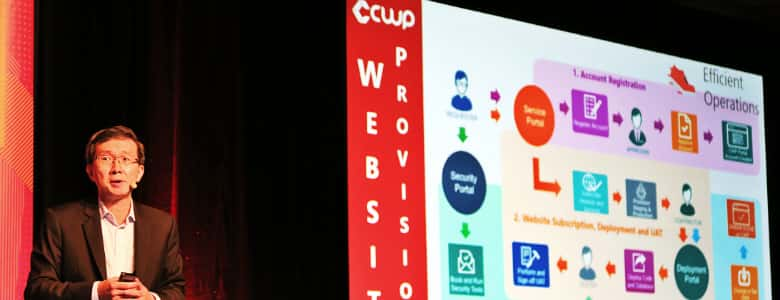Getting ahead in the Cloud

In the not-so-distant past, if you needed to share a large dataset with colleagues or collaborators, you’d snail-mail them a hard drive with the information on it.
Today, you can simply upload your data to the cloud, where it is synced and shared with anyone you choose to grant access to.
With their speed, convenience and reliability, cloud services are now widely used by individuals and companies for a variety of applications — data storage, website hosting and on-demand delivery of software, to name just a few.
In addition to private companies, the public sector also stands to benefit from what the cloud has to offer.
Government agencies, educational institutions and non-profit organisations can use it not only to streamline processes, but also to address social issues, said speakers at the inaugural Amazon Web Services (AWS) Singapore Public Sector Summit, held on 4 October 2017 at the Marina Bay Sands Expo and Convention Centre.
Optimising processes
Cloud platforms are powerful primarily because they reduce the amount of physical infrastructure and processes that organisations need to handle.
The public sector can thus use these platforms to improve and optimise processes, said Mr Peter Moore, Regional Managing Director (Asia Pacific and Japan) at AWS.
“Not only that, but if your needs go down, you can scale down and make the appropriate cost savings… that’s not something you can do when you have a [physical] data centre,” he added.
The accessibility and flexibility of cloud services also enables organisations to address important social issues. Mr Moore raised the example of AWS Educate, a global initiative that provides both students and educators with resources for cloud-based learning.
“This helps educate and prepare students to make valuable contributions to the future workplace,” he said, pointing out that some local institutions are already part of the platform.
Savings across the board
Speaking from the user’s perspective was Mr Tan Eng Pheng, Senior Director of the Clusters Group at the Government Technology Agency of Singapore (GovTech).
Mr Tan used the example of GovTech’s centralised Content Website Platform (CWP) framework to illustrate the cloud’s benefits.
The CWP provides a standardised software suite for government agencies to securely host websites with unclassified information on the cloud.
“Through the set of services that we integrate and manage centrally, we are able to achieve manpower savings, cost savings and time savings,” Mr Tan said.
Without the burden of managing infrastructure or maintaining other technical aspects, government agencies can then focus on other more critical aspects of website development such as interface design, content and appearance.
The timeline for new websites to get up and running is also cut dramatically short, said Mr Tan, citing the example of VITAL (originally the Centre for Shared Services), a government agency which pools selected human resource and finance functions across the public sector.
Thanks to public cloud automation and streamlined procurement processes, VITAL’s corporate website went live on CWP in a mere seven working days.
Security and scalability
“They were able to do this,” Mr Tan said, “because first of all their website had few security vulnerabilities. But if you do have many security vulnerabilities, we will check, inform you to correct them and come back again.”
Mr Tan reiterated that cybersecurity needs to be taken seriously.
Recalling a WordPress security breach in early 2017, he noted that websites under CWP were not affected, thanks to the adaptability and quick response made possible from the use of a cloud-based platform.
Additionally, the websites experienced no downtime whatsoever from the breach or from the patching updates.
The ability to scale is another innovative feature of cloud services — capacity can be modified dynamically, compared to days past where a data centre would be kept running with full resource capacity.
For example, with the public cloud, a web service’s or site’s capacity can be scaled up automatically in response to a sudden increase in traffic, simply by digitally replicating the original configuration to run additional processes and share the load.
“The main decision here is the ability to scale very quickly, without the need for additional hardware, and go through all the set-ups again,” said Mr Tan.
https://www.tech.gov.sg/media/technews/getting-ahead-in-the-cloud
